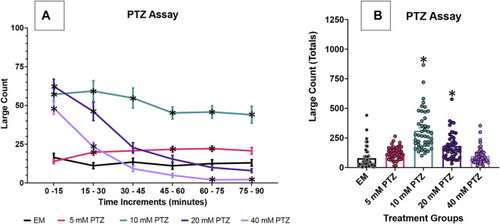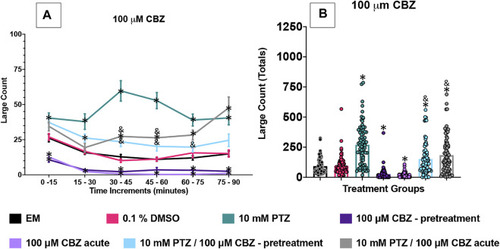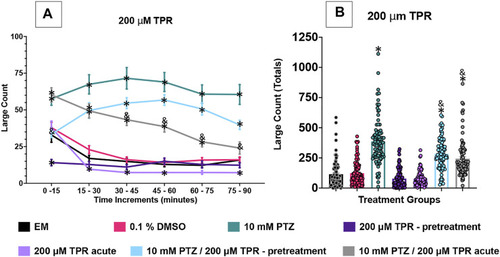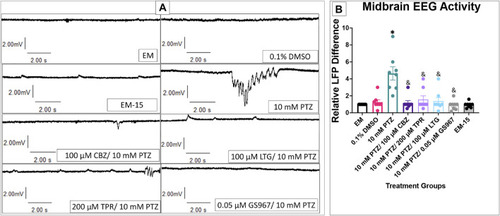- Title
-
Neural Activity Correlates With Behavior Effects of Anti-Seizure Drugs Efficacy Using the Zebrafish Pentylenetetrazol Seizure Model
- Authors
- Milder, P.C., Zybura, A.S., Cummins, T.R., Marrs, J.A.
- Source
- Full text @ Front Pharmacol
|
Behavioral profile of zebrafish larvae exposed to PTZ. The following graphs displays the average large count ( |
|
Behavioral profile of zebrafish larvae exposed to carbamazepine |
|
Behavioral profile of zebrafish larvae exposed to lamotrigine. |
|
Behavioral profile of zebrafish larvae exposed to topiramate. |
|
Behavioral profile of zebrafish larvae exposed to GS967. |
|
Calcium signaling activity in 7 dpf larvae. The fluorescence score is displayed on the |
|
Local field potentials in 7 dpf larvae. |







